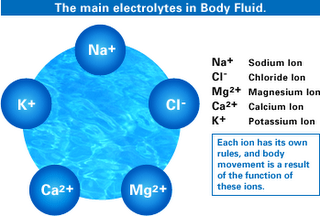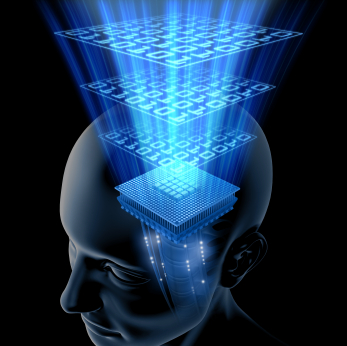Infections / Immune Challenges
Germs
 |
 |
There is a problem with the germ theory of disease. It doesn’t work. This is fortunate for us. If it did, there wouldn’t be anyone alive to believe in it. The germ theory of disease is based on Koch’s postulates. These are a series of scientific steps written by a scientist named Koch to explain and hypothetically verify how people get sick. They go like this: 1) A person is sick with a disease. 2) The germ is isolated from the sick person that is believed to be causing the disease. 3) This germ is then put into a healthy organism. 4) The healthy organism gets sick with the same disease. The problem is scientists can’t ever get this to work. Every time one of these infectious germs is introduced into a healthy organism, the germ dies. Even with a terrible infectious agent such as anthrax, it is estimated that only 1 out of 79 people who contact the organism get sick. We continuously breathe in 14,000 germs and bacteria every hour. In most any room at any time, you can find organisms associated with causing diseases. You simply don’t get sick because you breathe in or contact a germ.
Germs and bacteria are basically scavengers. The only thing that they live on is dead, weak or damaged tissue. Before a tissue or organ can become infected, the life has to go out of the involved area. Let me present you with a rather graphic analogy. Say you were on an African Savanna and came across a dead elephant. The elephant’s body was set upon by buzzards. Would your next thought be, “Those darn buzzards killed another elephant?”. Yet this is the same type of logic we use when dealing with infection. Now there is no doubt that once the buzzards are present, they can cause quite an effect on the elephant’s body and make a mess out of things. Furthermore, if the elephant was not yet dead but extremely weakened, you would definitely want to get rid of the buzzards. The point is, the buzzards are not the true cause of the condition. We need to look at what made the elephant so weak and dying that the buzzards could then feed off of it. So it is with infections.
When dealing with infections, we first need to clear the area of the infections and the associated pus, toxins and debris. However, it is even more important to restore the proper function in the body so that the infected area is no longer weak or damaged. This may involve restoring the normal acid/base and mineral balance of the tissue, restoring oxygen or proper nutrition to the affected area, fixing the nerve or energy flow, thereby restoring communication, removing chemical or internal toxins or a combination of the above. If this is not done, the infection keeps coming back and chronic conditions ensue.
To push the point even further, I wish to point out that scientists using special microscopes have observed and filmed infectious organisms changing from one type to another depending on what environment they are found in. In other words, the exact same virus has been observed to change into bacteria, into different types of bacteria and then to change into yeast depending on the environment around the organisms. The fancy word for this phenomena is called pleomorphism. This certainly is enough to make one step back and take another look at the theory that one germ causes one disease. After much research, one microbiologist of note decided to abandon his earlier beliefs on this germ theory. You may have heard of him. His name was Louis Pasteur.
Cause Point Correlative Testing makes it possible to determine what is necessary to handle the immediate form of an infectious organism, neutralize the pus and toxins produced and restore the tissue environment back to normal so that the infection stays away. In other words, CEMT allows you to be healthy. If you or someone you know may be suffering from ill health associated with acute or chronic infection, contact the office at (260) 459-6160 (Ft. Wayne) or (773) 929-3964 (Chicago) for an appointment.
Unknown Infections
When I was going to college for my Bachelor’s degree, I worked at a lake station owned by Purdue University as a research assistant. I helped out mainly in the collection and study of zooplankton (microscopic animals) and algae. I remember one afternoon one of the other researchers was there working and studying bacteria. In an attempt to make conversation, I asked him what kind of bacteria he found in the lake. The guy looked up at me like I was surely the biggest idiot in the world and said, “Are you kidding? It’s a veritable zoo in there. There are so many different kinds of organisms in there that less than 10% of them have even had enough time devoted to them to have a name”. Bear in mind that this lake was classified as the cleanest lake in Indiana. So I had a realization that science really didn’t have as firm of a handle on this germ thing as I was led to believe.
Laboratory tests for infection are very specific. In other words, in order to tell if you have a specific type of infection (tuberculosis, Epstein-Barr virus, pneumonia, etc.), you have to have the specific test for that organism. If you aren’t given that specific test, then you don’t know if you have that infection. The problem lies in the fact that there are many more types of infectious organisms than there are tests. (Even if this were not the case, it would be far too expensive to routinely run the tests for all known infections). You can see how easy it can be for a person to have an infection that is undetected.
My personal opinion, based on clinical observation, is that many conditions of unknown cause are actually from infections that are of a type that have not or cannot be detected by standard medical procedures. Some don’t even fit neatly into the classification of bacteria, yeast or virus. I believe that these “undetectable” organisms underlie many types of diseases and conditions deemed as having no known cause (and therefore no known cure). Such conditions would include many types of arthritis, thyroid diseases, MS, diabetes, various autoimmune disorders and even tumors. They may affect the nerves and brain and cause problems with depression or dementia or hyperactivity. They may infect a peripheral nerve and cause sciatica or may infect the disc itself and weaken it to allow disc herniation. An infection in the nerves to the heart for instance may cause sharp stabbing chest pains. These undetectable infections may be behind the chronic malfunction of any gland, tissue or organ and behind a wide host of fancy sounding disease names.
If this is true, then to handle these disease conditions, all that would be necessary would be to determine the exact proper remedies that would strengthen the body and allow it to kill these infections and repair the damage. The condition and its associated symptoms would disappear. That I have seen this happen many, many times is the basis for my belief that this is indeed the case.
Modern medicine is unfortunately woefully inadequate to handle such a broad range of infectious organisms. Its arsenal is limited to select antibiotics which work solely on certain strains of bacteria and even these are becoming less and less effective due to their gross over use. Fortunately for us, there exists a wide range of natural immune system enhancers that are effective in handling these “incurable” infections.
The trick is, of course, to match the specific infection with the specific immune system enhancer that will work in each case. This is what we do at our office. It is one of the reasons why we get results with so many patients when modern medicine has failed. If you have a condition that has no known cause and has no known cure, the first thing to rule out would be one of these “unknown” infections. When you find and address the actual cause, amazingly enough, the problem goes away. The effectiveness of this “other infection” approach is evidenced by the results. If you are looking for results, call (260) 459-6160 (Ft. Wayne) or (773) 929-3964 (Chicago) for an appointment.











